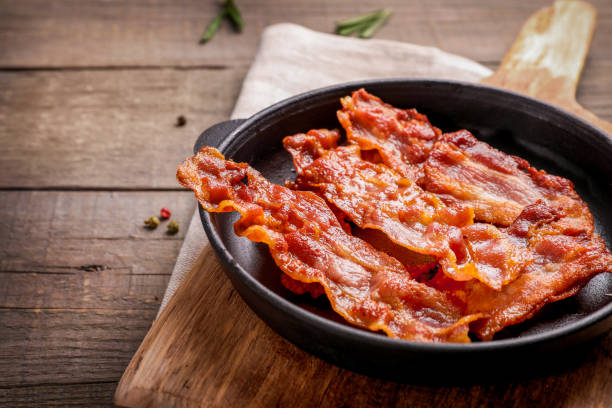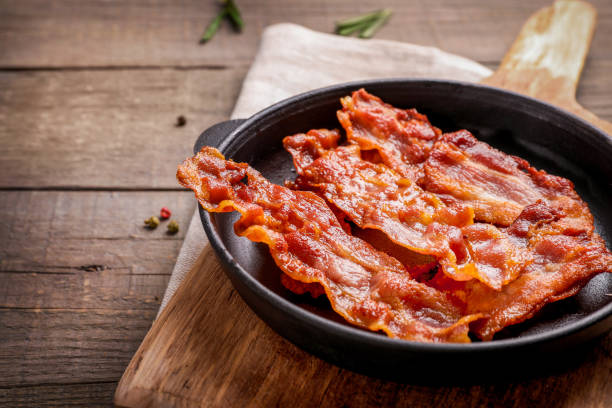If you have high blood pressure, you know how difficult it is to keep track of your food in order to enhance your health. Your blood pressure is heavily influenced by the things you consume — and those you don’t. High salt diets, for example, upset your body’s water balance, putting a strain on your blood vessels and thus increasing your blood pressure. Looking for additional advice on what to avoid to treat high blood pressure? Start here.
Chicken
What could possibly be wrong with this American classic of family dinners and lunchtime sandwiches? However, chicken is frequently injected with saltwater solutions during processing, giving it a hidden source of sodium even before you put anything on it. Chicken is ranked eighth on the CDC’s list of the top ten sodium sources. The salt content of a 4 oz boneless, skinless chicken breast can range from 40 mg to 330 mg. Look at the label: The sodium content per serving should be less than 70 mg.
Deli Meat and Bacon
It doesn’t matter if you get roast beef, ham, or bacon from the deli counter; they’re all high in sodium. Even the ones labeled “reduced salt” have a significant sodium content. According to the American Heart Association (AHA), which considers 1,500 mg as the appropriate daily amount, just six thin slices of deli meat can contain half of your recommended daily sodium consumption. You can see the difficulty when you realize that two small pieces of bacon have 330 mg of sodium.
Sandwiches
This is, without a doubt, a very broad category. However, the bulk of traditional sandwich ingredients are not good for your blood pressure. A typical turkey sandwich on whole-wheat bread with mayo, a pickle, and a slice of cheddar, for example, contains roughly 1,315 mg of salt. The good news is that you don’t have to give up sammies forever; instead, prepare your own and stuff them with fresh veggies (no mayo!).
Bread
True fact: According to the American Heart Association, yeast breads (including rolls, bagels, flour tortillas, and wraps) are the dietary item that contributes the most sodium to American diets. To put things in perspective, one slice of Whole Foods’ Organic 100 percent Whole Wheat Sandwich Bread has the same amount of sodium as 22 potato chips. When purchasing, aim for loaves with a salt content of no more than 5% of the daily value (DV). (A DV of 20% or higher is considered excessive.)
Canned Soup
We no longer need salt to preserve canned goods thanks to improved technology. However, because food loses flavor when cooked to sterilize and preserved in a can, manufacturers frequently add a lot of salt. The salt content of canned soups varies from 100 mg to 940 mg per cup. Look for unsalted, sodium-free, or low-sodium options. (Low sodium implies less than 140 mg sodium per serving.) You can also dilute a broth-based soup with a low-sodium broth if it’s a broth-based soup.
Alcohol
According to new research, drinking seven to thirteen alcoholic beverages each week can significantly increase your risk of high blood pressure. Alcohol in this amount is thought to trigger the sympathetic nervous system, which raises cortisol levels and disrupts the vascular inflammatory system.
Sugary Drinks
Although it’s no surprise that soda is high in empty calories, it’s astonishing how little it takes to raise blood pressure. According to a study published in The American Journal of Clinical Nutrition, drinking just one sugar-sweetened beverage each day can raise your cholesterol levels. When you combine that with a study published in Nutrients that revealed that reducing added sugar intake by just 2.3 tablespoons can result in lower hypertension readings, you have a good reason to avoid the sweet stuff.
Restaurant Meals
No one is advising you to forego your anniversary dinner or holiday gathering. However, since 71 percent of people’s sodium intake comes from foods eaten outside the home, according to a Circulation article, you’re better off conserving eating out for rare occasions. Fast-food eaters ingest six times more sodium than they realize, according to another study. If you’re eating out, keep these suggestions in mind: Order the lunch quantity; avoid pickled, cured, or smoked dishes; forego the soy sauce, and request dressing on the side.

